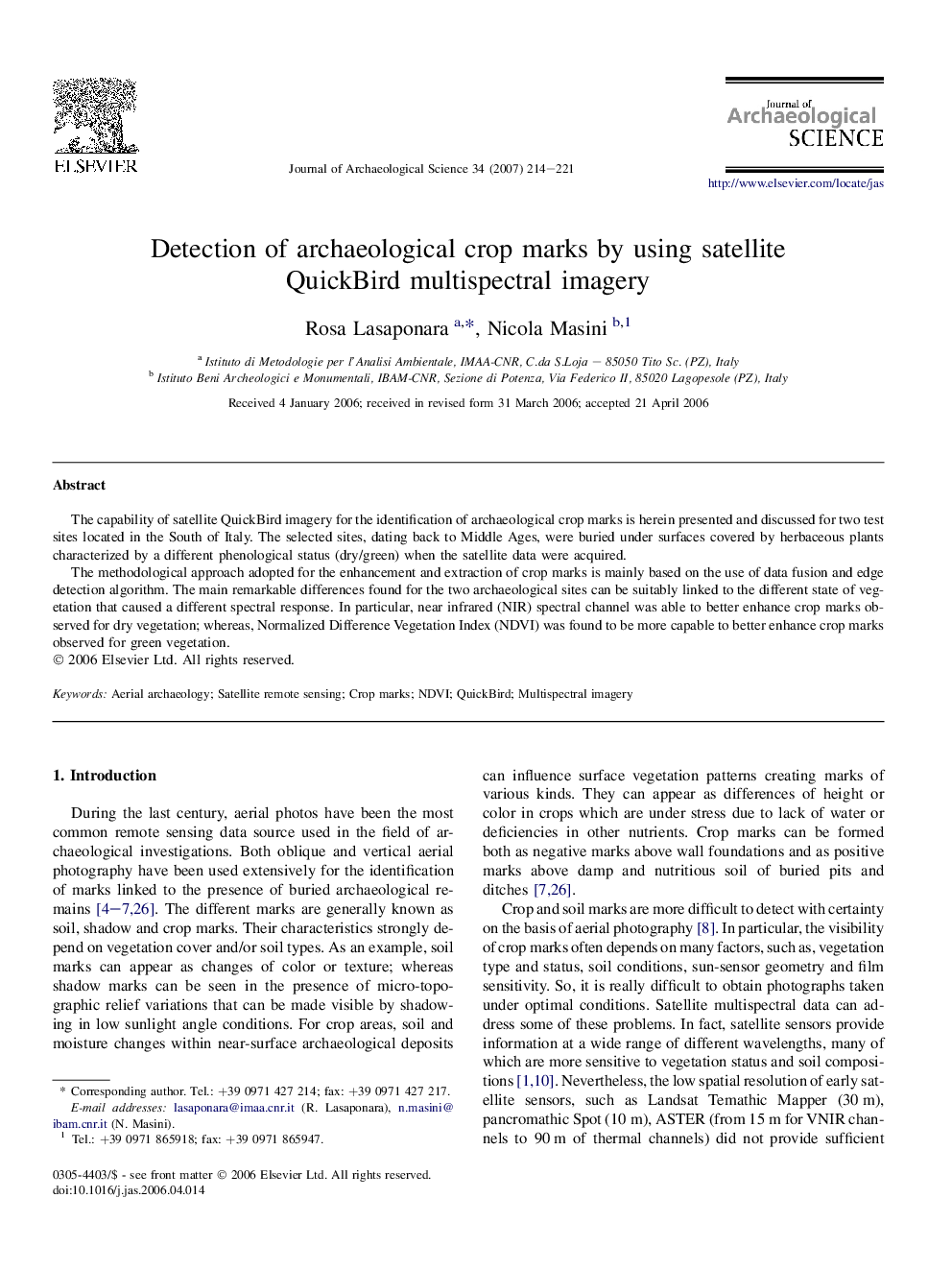| Article ID | Journal | Published Year | Pages | File Type |
|---|---|---|---|---|
| 1037693 | Journal of Archaeological Science | 2007 | 8 Pages |
The capability of satellite QuickBird imagery for the identification of archaeological crop marks is herein presented and discussed for two test sites located in the South of Italy. The selected sites, dating back to Middle Ages, were buried under surfaces covered by herbaceous plants characterized by a different phenological status (dry/green) when the satellite data were acquired.The methodological approach adopted for the enhancement and extraction of crop marks is mainly based on the use of data fusion and edge detection algorithm. The main remarkable differences found for the two archaeological sites can be suitably linked to the different state of vegetation that caused a different spectral response. In particular, near infrared (NIR) spectral channel was able to better enhance crop marks observed for dry vegetation; whereas, Normalized Difference Vegetation Index (NDVI) was found to be more capable to better enhance crop marks observed for green vegetation.
